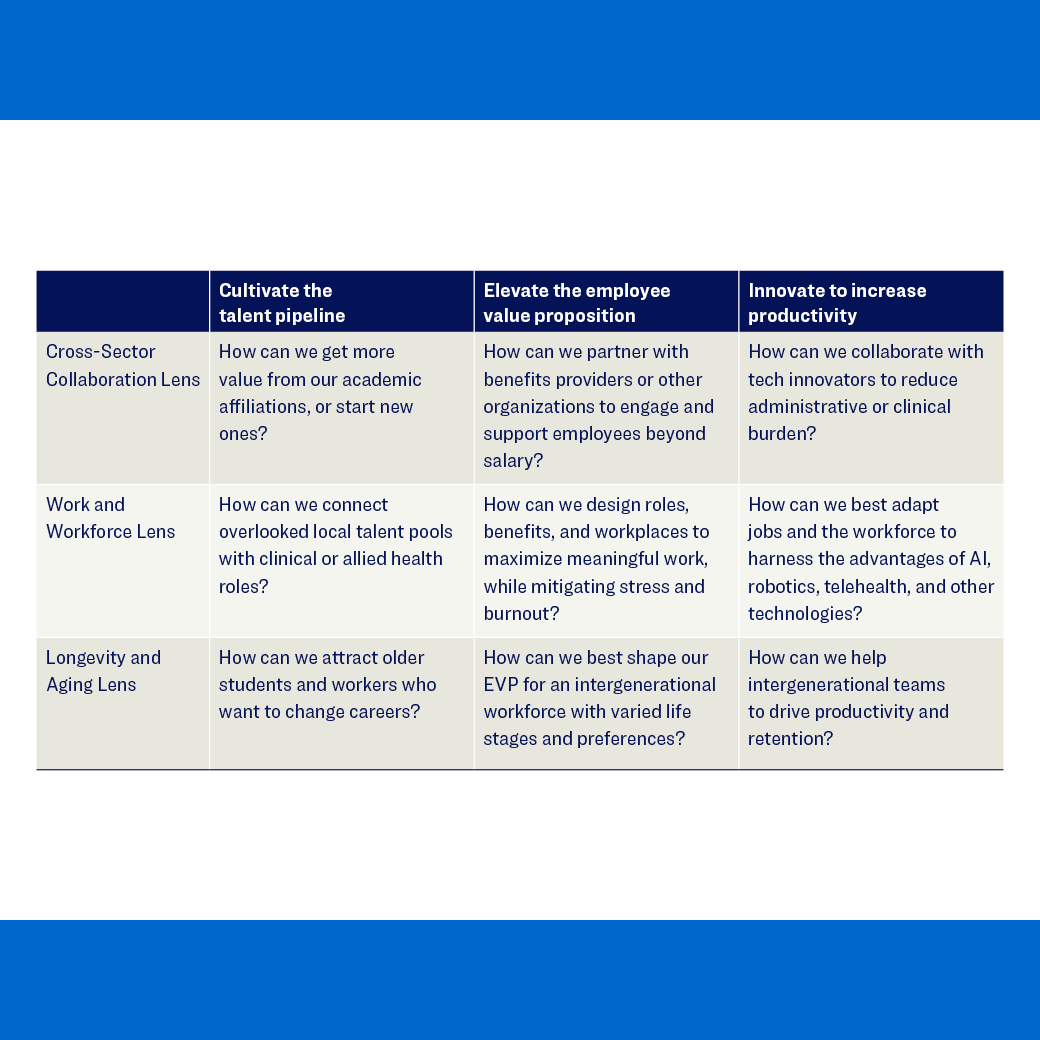Discover how TIAA serves healthcare institutionsOpens in a new window
Americans are living longer, straining hospitals and healthcare systems that are struggling to meet rising needs for care.
Summary
The U.S. healthcare system is at a crossroads, grappling with the demands of caring for a rapidly aging population. Staffing shortages are creating stress and burnout, productivity remains stagnant, and operating costs are growing—all of which are unsustainable in the long run. This paper explores how healthcare institutions can adopt new strategies, innovations and technologies to address these issues. It also looks at parallels between healthcare and the higher education sector, which is dealing with similar demographic and operational challenges, to inform potential solutions.
Key Insights
- Despite dramatic advances in digital technology, healthcare productivity is flat, and in some cases declining.
- After a drop during the pandemic, health sector employment rebounded to add 2.6 million jobs by March 2024, yet many hospitals still report RN vacancy rates above 10%.
- While healthcare wages increased by 20% over the last four years, only 52% of healthcare employees feel they are paid fairly—the lowest among all industries.







